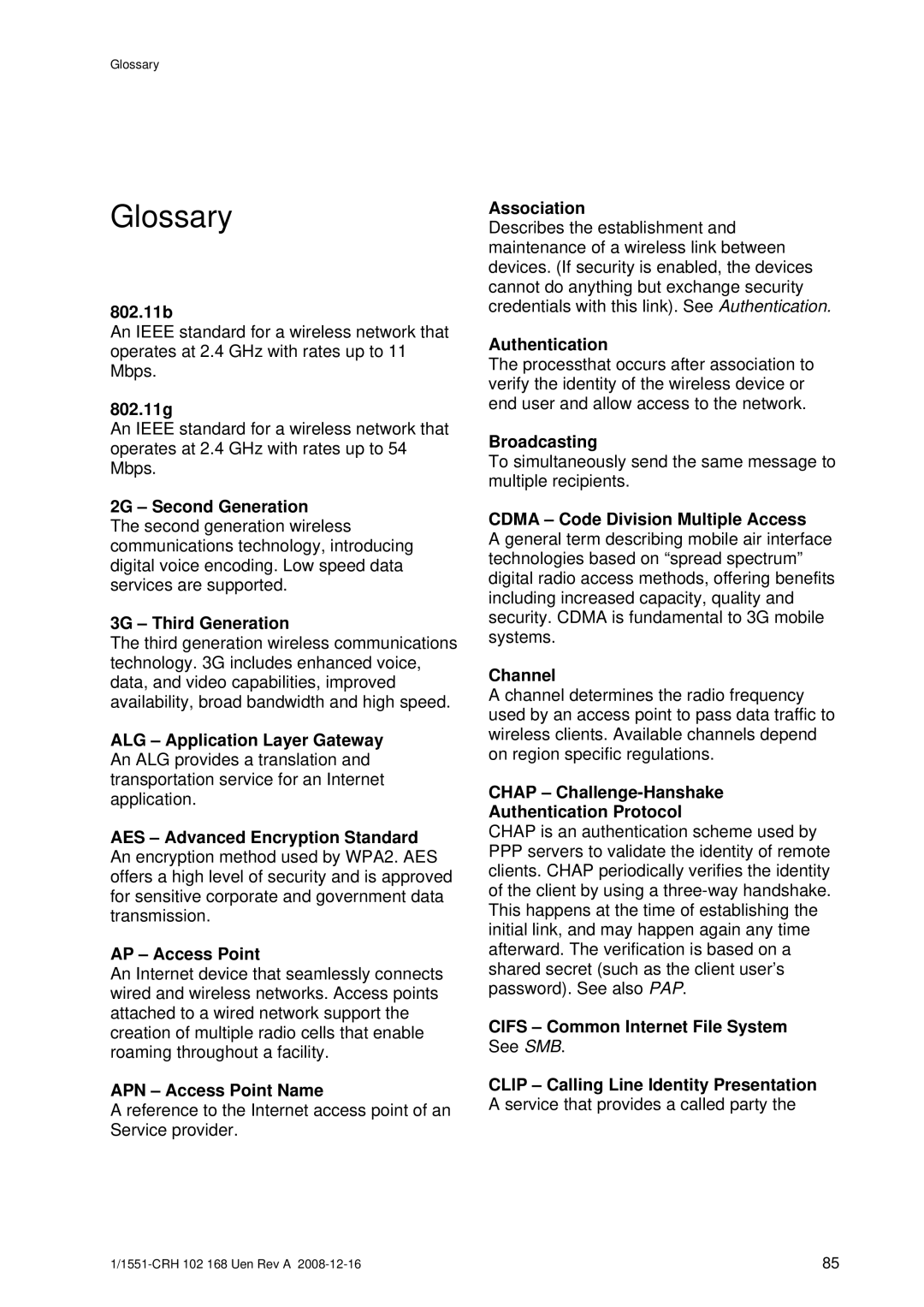Glossary
Glossary
802.11b
An IEEE standard for a wireless network that operates at 2.4 GHz with rates up to 11 Mbps.
802.11g
An IEEE standard for a wireless network that operates at 2.4 GHz with rates up to 54 Mbps.
2G – Second Generation
The second generation wireless communications technology, introducing digital voice encoding. Low speed data services are supported.
3G – Third Generation
The third generation wireless communications technology. 3G includes enhanced voice, data, and video capabilities, improved availability, broad bandwidth and high speed.
ALG – Application Layer Gateway An ALG provides a translation and transportation service for an Internet application.
AES – Advanced Encryption Standard An encryption method used by WPA2. AES offers a high level of security and is approved for sensitive corporate and government data transmission.
AP – Access Point
An Internet device that seamlessly connects wired and wireless networks. Access points attached to a wired network support the creation of multiple radio cells that enable roaming throughout a facility.
APN – Access Point Name
A reference to the Internet access point of an Service provider.
Association
Describes the establishment and maintenance of a wireless link between devices. (If security is enabled, the devices cannot do anything but exchange security credentials with this link). See Authentication.
Authentication
The processthat occurs after association to verify the identity of the wireless device or end user and allow access to the network.
Broadcasting
To simultaneously send the same message to multiple recipients.
CDMA – Code Division Multiple Access
A general term describing mobile air interface technologies based on “spread spectrum” digital radio access methods, offering benefits including increased capacity, quality and security. CDMA is fundamental to 3G mobile systems.
Channel
A channel determines the radio frequency used by an access point to pass data traffic to wireless clients. Available channels depend on region specific regulations.
CHAP – Challenge-Hanshake
Authentication Protocol
CHAP is an authentication scheme used by
PPPservers to validate the identity of remote clients. CHAP periodically verifies the identity of the client by using a
CIFS – Common Internet File System
See SMB.
CLIP – Calling Line Identity Presentation A service that provides a called party the
85 |
